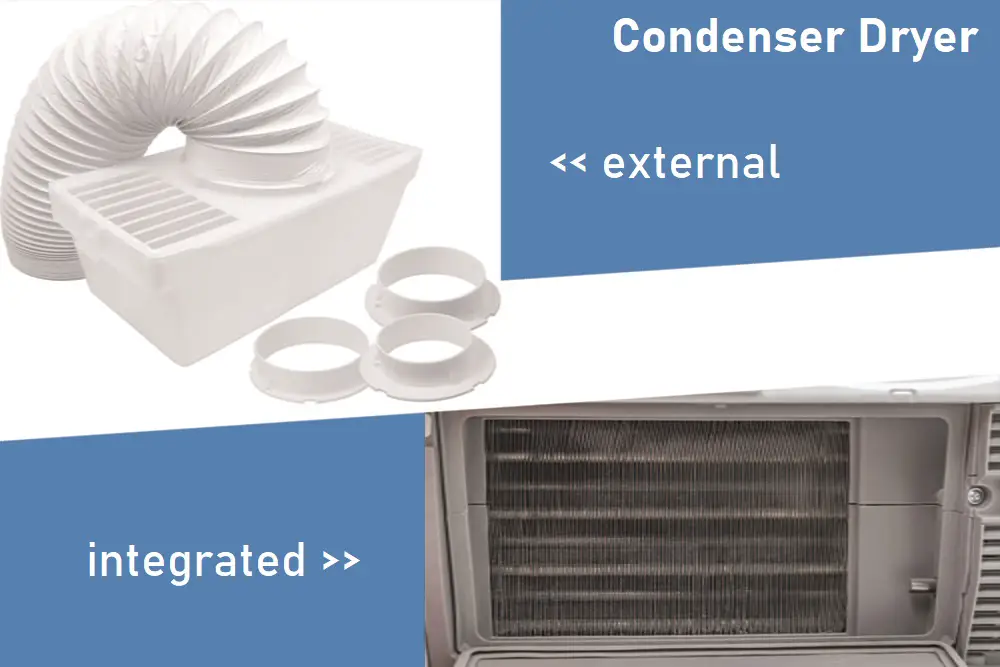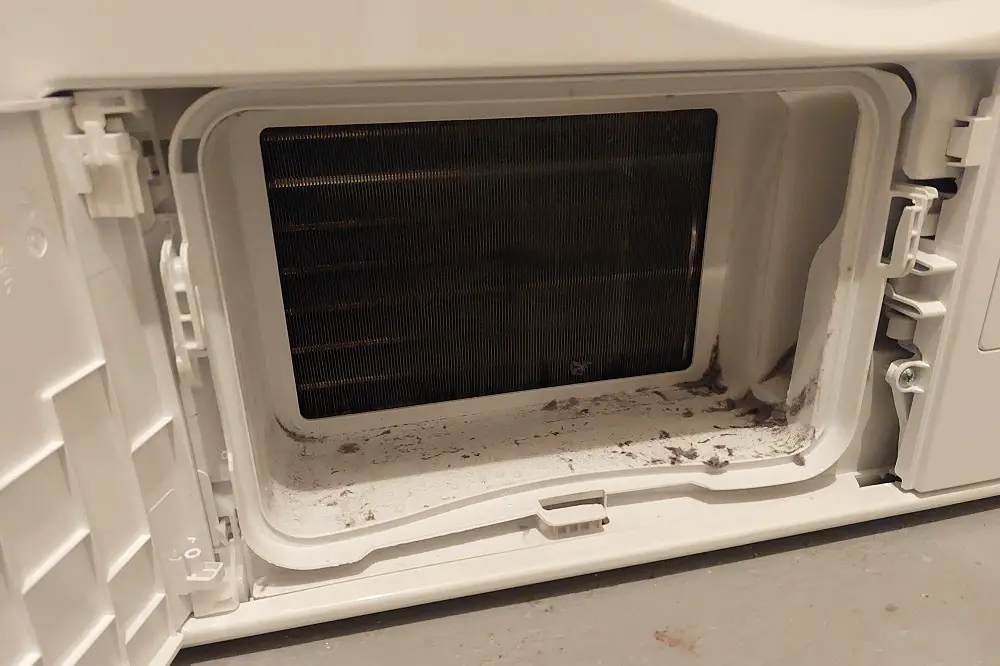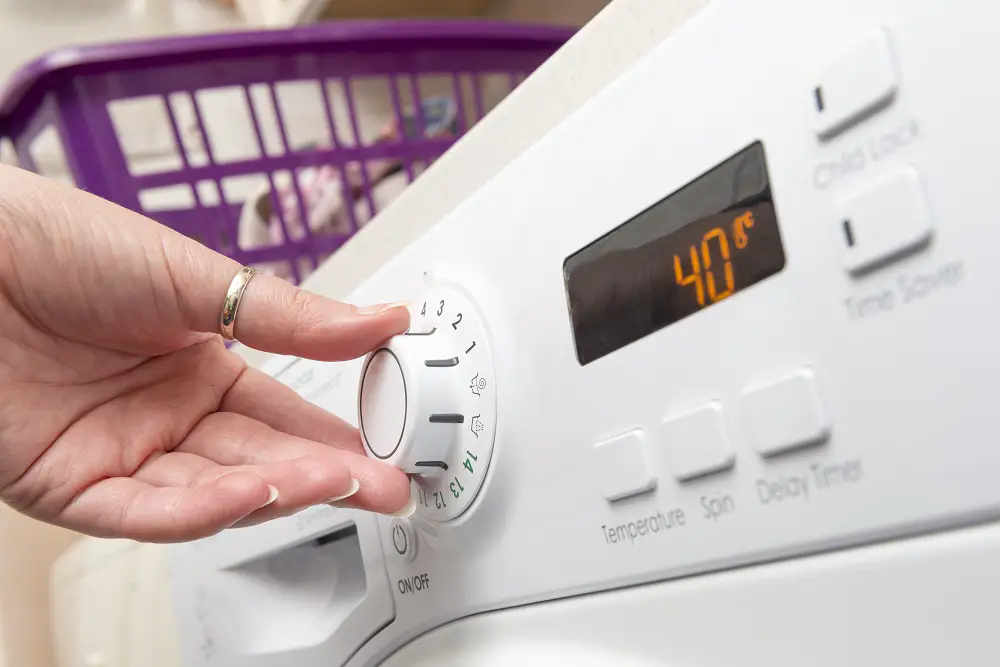If you have a dryer or you’re planning on getting one, it is essential to ensure your dryer vents appropriately. Mostly, electric dryers vent out hot, moist air and lint, while gas dryers also vent out carbon monoxide.
Since clothes dryers became popular only after the 1960s, older homes most likely don’t have vented laundry rooms. The other option for those who cannot install outdoor dryer vents is indoor venting. But can a dryer be vented inside?
While you can vent a clothes dryer inside, it isn’t safe to do so. Apart from the risk of a fire hazard, the moist, warm air causes too much moisture and mold growth. The deposited lint is flammable and causes adverse health effects. Also, according to building codes, dryers must vent to the exterior.
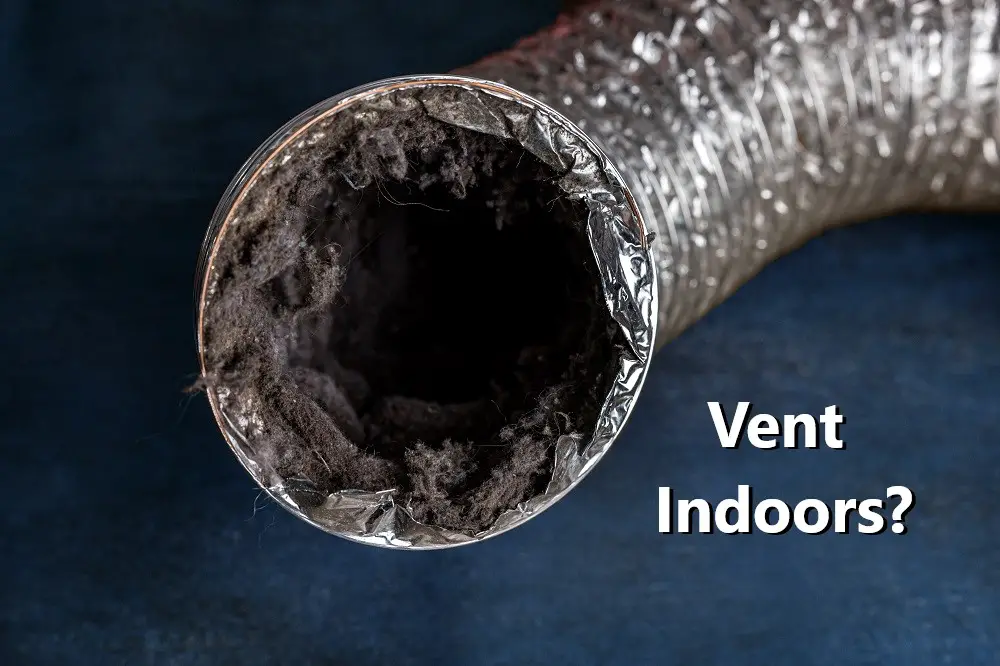
Suppose you choose an indoor dryer vent; it would help if you knew the risks and disadvantages of doing this.
Table of Contents
5 Best Ways to Vent a Dryer Without Outside Access
If you live in a place without outside access for venting your electric dryer, indoor venting could be a solution. As long as the venting is installed correctly and you ensure regular maintenance, it can be sufficiently safe.
But are indoor dryer vents legal? No, they aren’t in most states. Residential codes in some states state that dryers must be vented according to the manufacturer’s instructions, which could allow for indoor or outdoor venting.
Never use indoor dryer vents for gas dryers for safety reasons.
Here are the best ways to vent a dryer without outside access.
1. Indoor Dryer Vent Kit
For electric dryers to be more efficient and to remove dryer lint, water vapor, and excess heat for proper airflow, indoor dryer vent kits are a popular option.
If you don’t install one, your dryer will eventually become inefficient, wear out faster, and also become a fire hazard.
A vent kit typically consists of a lint trap bucket, a long flexible aluminum duct, and a clamp. The filtration system has the dryer exhaust flowing into a bucket filled with water to trap the lint. The humid air is released into the laundry room through holes in the bucket lid.

Among the best indoor dryer vents is the BetterVent indoor dryer vent kit.
2. Condenser Box
A condenser box is a place of collection for the water from the dryer exhaust. Making provisions for the moist air to vent out of the building will make for complex installation and difficult to replace.
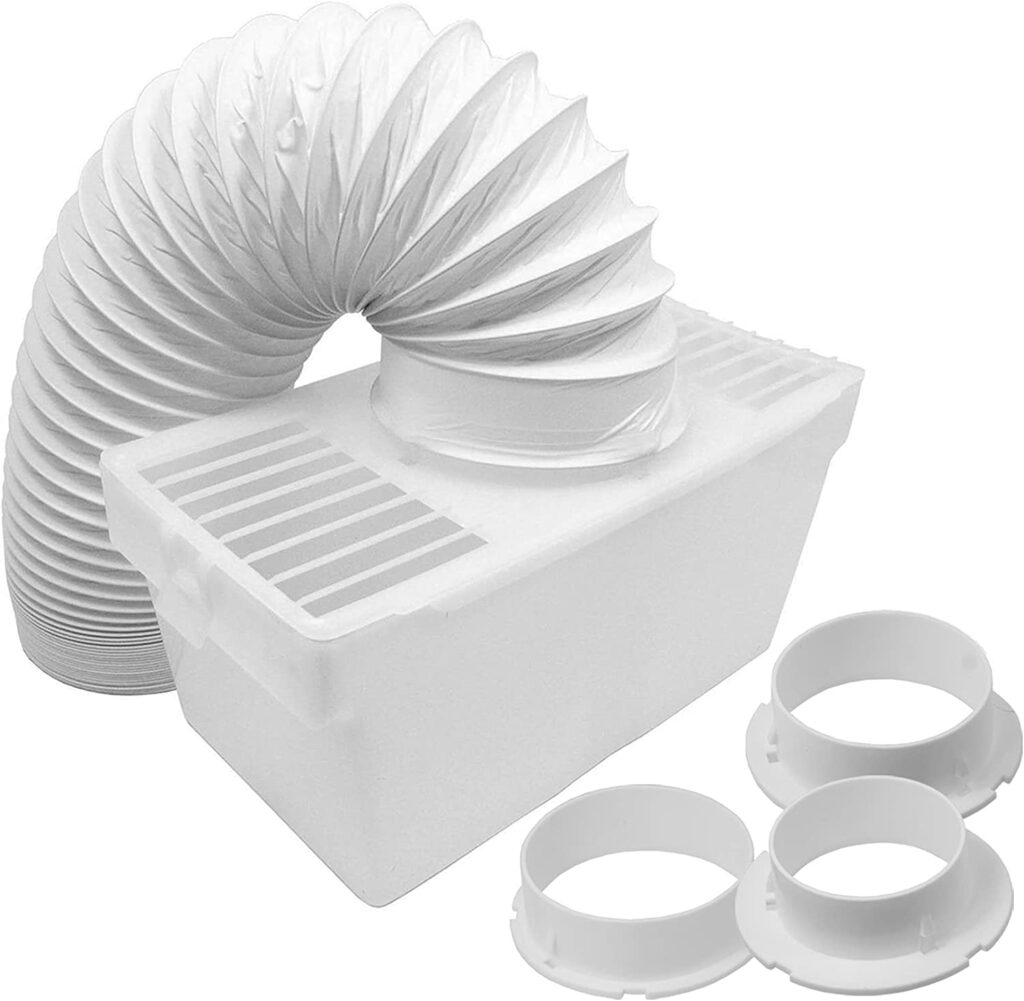
The alternative is connecting the exhaust pipe to an external condenser box. The vent hose of this box connects to the tumble dryer outlet, and the box is filled halfway with cold water or ice to condensate the water vapor.
3. Venting the Dryer Hose to a Window
One of the easier ways is to vent a dryer without outside access out a window, if available. For a temporary solution, just place the flexible hose out the window and cover the sides of the window to prevent air infiltration.

For making it a permanent solution, you could try a window dryer vent kit, that can be installed at the bottom of the window. It prevents outdoor air from getting in by covering the sides.
4. Vent Indoors With Sufficient Ventilation
If an indoor vent is your only option, a considerably safe way to do so is to use the dryer in a large room of your home and ensure ample ventilation.
When using the dryer, keep the windows and doors open to let the hot, humid air out as much as possible.
5. Use a Dehumidifier
To avoid the discomfort of the moist air indoors, you may consider using a dehumidifier and fans or air conditioning. However, this setup will also increase your energy bills.
Disadvantages of Venting Indoors
You must not vent a gas dryer indoors for the risk of carbon monoxide poisoning. If you were wondering, ‘Are indoor dryer vents safe?’, here are some disadvantages of indoor dryer venting.
Fire Hazards
Although dryers have lint traps to catch the lint, some lint escapes through the dryer exhaust. Lint is a highly flammable material. When you vent your dryer indoors, there is a higher risk of house fires with lint buildup. Venting into the attic is highly dangerous.
Since lint is also an allergen, it causes health problems like respiratory troubles and allergies.
Mold Problems
Dryers remove the moisture from wet clothes and vent it out. The expelled moisture increases the moisture inside your home. And, when the humidity rises, it becomes damper, leading to mold growth.
Mold causes health issues, including allergic reactions. Since mold grows in hidden places, those allergic to mold might not realize what is causing their symptoms.
Increased Humidity
Indoor dryer venting, especially during the winter, might seem beneficial to keep warm with the extra humidity. However, it does more harm than good.
The excess humidity can cause structural damage. Most commonly used building materials like wood and drywall absorb extra moisture and begin to rot. The repairs can cost thousands of dollars. Humidity can also damage the structural support, insulation, roof, and even the attic (if you’re venting into it).
Condensation buildup, especially in areas like the windows, can damage the structure. Also, when the indoor humidity increases, the clothes might take longer to dry, defeating the purpose of a clothes dryer in the first place.
Health Problems
By venting indoors, the chemicals in the detergent get released inside your house. Dryer sheets and fabric softeners contain toxic chemicals like benzyl acetate and can deteriorate indoor air quality. This can cause allergic reactions and respiratory problems and negatively impact health in several ways.
Some health problems include dull headaches, blurred vision, drowsiness, dizziness, and vomiting when exposed to fumes from a dryer vent. Some people may also experience a burning sensation in their lungs or throat.
When NOT to Vent Indoors
There are certain conditions when you shouldn’t vent your dryer indoors:
- Gas dryers that release carbon monoxide (a highly dangerous gas that is colorless, odorless, and tasteless) must never be vented indoors since the gas is highly poisonous to humans.
- If you or anyone living with you has any health issues, allergies, or respiratory problems, it’s best to avoid dryer venting indoors.
- If you don’t have sufficient space and your dryer is in a small room without ventilation, consider outdoor vents or ventless alternatives.
- For moisture-sensitive rooms, especially those with drywall, wooden beams, plaster, etc., indoor vents will cause damage.
- Generally, if it’s possible at all, avoid any sort of indoor venting system for dryers.
Best Alternative for Venting Indoors
With advancing technology, there are clothes dryers that eliminate the need for indoor venting. Ventless dryers like the heat pump dryer or condenser dryer are better alternatives.
Both these types of dryers take in air from the surrounding area. Then, heat the inside of the dryer drum, causing the evaporation of water from the laundry. This vapor is cooled, causing it to condense and dry the clothing.
Such dryers don’t need to be vented. They’re also energy efficient, take up much less space, and require less maintenance. Their drawbacks include being more expensive and extended drying times.
If you cannot facilitate proper dryer venting or don’t have a dedicated laundry room, these ventless dryers are a good choice.
Conclusion
An electric dryer is best vented outside the house. Those who don’t have the provision to do so may consider using indoor dryer vent kits, a condenser box, venting out a window, using sufficient ventilation, or using a dehumidifier and fan or air conditioning as alternatives.
However, it isn’t recommended to vent your dryer indoors since there’s the risk of fire hazards, mold problems, increased humidity, and health problems. Consider using a ventless dryer (a condenser or heat pump dryer) if outdoor venting isn’t possible.
